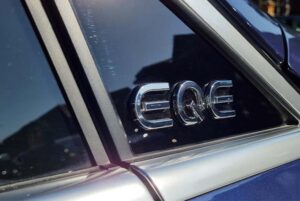Mercedes-Benz India has been planning to further strengthening its aftersales support for EV customers by equipping its network with the requisite tools and competencies to better service EVs, and also lower repair costs.
 To make its aftersales personnel acquainted with EVs when it first introduced the EQC in October 2020, Mercedes-Benz India technicians were initially trained to handle high-voltage electric cars, and diagnose as well as troubleshoot a problem by complete part replacement.
To make its aftersales personnel acquainted with EVs when it first introduced the EQC in October 2020, Mercedes-Benz India technicians were initially trained to handle high-voltage electric cars, and diagnose as well as troubleshoot a problem by complete part replacement.
However, the company says it is now aiming for child-part repair of such complex and electronics-intensive EV components such as the power electronics, motors, and on-board chargers, which require high levels of skill and expertise for repairs.
“In the first phase, while we trained our aftersales workforce to work on high-voltage cars, and made them competent to diagnose and troubleshoot issues by part replacement, we have now kicked off the second phase of training, wherein our technicians will be able to work on the child parts of an EV,” Santosh Iyer, Managing Director and CEO, Mercedes-Benz India commented. “It is a much more complex process, particularly, in a live-charge environment, and we have started this training for all our network partners across India,” Iyer added.
Mercedes-Benz India has tied up with engineering colleges across India for a Diploma in Advanced Automotive Mechatronics, wherein it has localised the intensive curriculum from Germany, for easier understanding by Indian technicians. “We have included EV repair methodologies that have been supplied by our headquarters in Germany, and standardized them as part of this extensive curriculum, which certifies technicians as per global standards,” said Iyer.
“Every year, around 200 technicians graduate from this course, and these people become available to the larger EV ecosystem in the country, beyond just the Mercedes-Benz network. Our road-side assistance technicians are also competent to diagnose and solve possible issues with EVs,” he added.
Commenting on EV batteries, Iyer said that they are robust enough and generally reliable. “We do not want to repair batteries. While nothing typically happens, if need be, we would prefer replacing the battery pack altogether in the existing technology setup rather than repairing it,” Iyer pointed out.
Mercedes-Benz India is also augmenting its efforts to strengthen the charging infrastructure in the country as the EV numbers continue to rise.
The company says it has opened up its existing charging network which is a combination of 22kW AC and up to 180kW DC fast chargers, and made it accessible to cars across brands. It has also given access to the flagship 200kW DC fast chargers listed on its mobile application to EV owners of other OEMs.
“We are also identifying white spots, particularly on inter-city routes, and are investing in equipping them with fast chargers. Presently, we have around 40 such fast chargers (160-180kW) across key locations in India, and a Mercedes-Benz EQE, for instance, can be topped up to 80 percent SOC within 20 minutes by using any of these points,” Iyer said.
“I believe the EV charging ecosystem is evolving rapidly, and today, most of the inter-city use cases such as Delhi-Chandigarh, Delhi-Jaipur, Mumbai-Pune, or Mumbai-Goa, are already well equipped. Having said that, a lot needs to be done, and I am hopeful that with more products coming in, more OEMs will invest in this space. It is a matter of time; as we see more EVs on the roads, and people starting to travel long distances in them, this ecosystem will strengthen further,” Iyer added.
Arindam Lahiri, CEO, ASDC had mentioned, “All existing industry job roles are getting upgraded with the significant changes that are happening in terms of technology. We have also brought in a new curriculum, especially in the areas of Industry 4.0 as well as electric vehicle-related courses in manufacturing, engineering, and after-sales service.”
Lahiri further explained that ASDC is also building certain international partnerships to get hands-on exposure on these incoming technologies, learn from the experts, and bring the skill sets to India by creating a pool of trainers.

